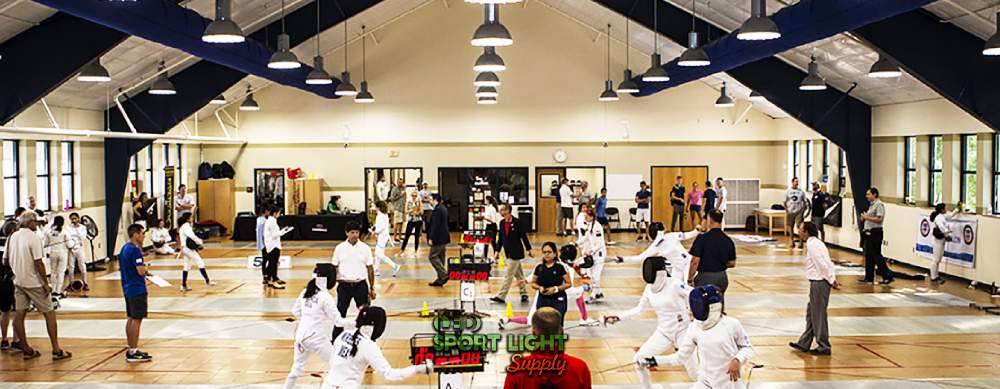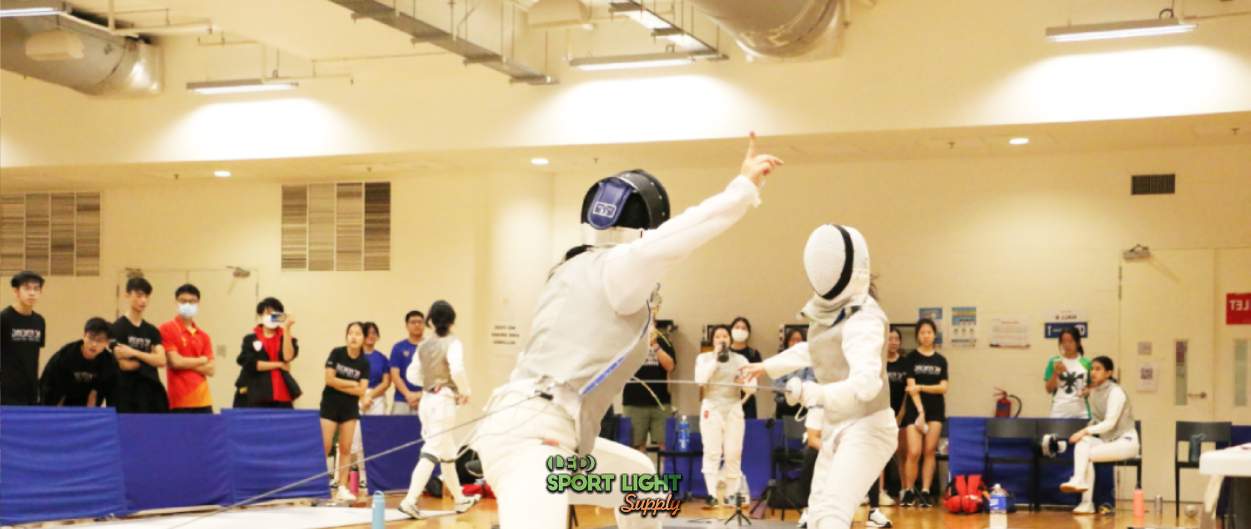Fencing, a sport that combines precision, speed, and strategy, requires a well-illuminated environment to ensure athletes can perform at their best. The quality of lighting in a fencing hall directly impacts the performance and safety of the fencers, making it a crucial element in the design and maintenance of such facilities. With advancements in LED technology, fencing hall lighting has evolved to provide better visibility, reduced glare, and enhanced energy efficiency.
Adequate illumination allows fencers to see their opponents clearly, discern subtle movements, and react swiftly. Poor lighting can lead to accidents, reduced performance, and a less enjoyable experience for both athletes and spectators. Therefore, investing in high-quality lighting solutions is essential for any fencing facility aiming to meet professional standards.

Table of Contents
ToggleDesigning an effective lighting system for a fencing hall involves several key considerations. These factors ensure the lighting not only meets the needs of the fencers but also enhances the overall experience for spectators. Here are the primary considerations:
The dimensions and layout of the fencing hall significantly impact the lighting design. A larger hall may require more fixtures or higher intensity lighting to ensure uniform coverage, while the layout can dictate the placement of lights to avoid shadows and dark spots. Understanding the specific layout helps in planning the distribution of light fixtures effectively.
The height of the ceiling is crucial in determining the type and number of light fixtures needed. Higher ceilings may necessitate more powerful lights or fixtures with a broader beam spread to ensure adequate illumination reaches the fencing area. Conversely, lower ceilings might benefit from fixtures that provide more focused lighting to avoid excessive brightness and glare.
Different fencing activities may require varied lighting conditions. For example, training sessions might prioritize general visibility and uniform lighting, while competitive events may require more focused lighting to highlight the fencing strips and ensure clear visibility for both fencers and judges. Understanding the specific activities helps tailor the lighting design to meet these needs.
If the fencing hall is designed to accommodate spectators, their visual comfort must also be considered. This involves ensuring that lighting does not cause glare or discomfort to the audience. Properly positioned and shielded lights can enhance the viewing experience without compromising the fencers’ visibility.
High visibility and minimal glare are essential for fencers to perform at their best. This can be achieved by using lighting fixtures with appropriate diffusers or reflectors and positioning them to reduce direct glare. Consistent and uniform lighting across the fencing area helps in avoiding shadows and enhances overall visibility.
Importance of Uniform Illumination
Uniformity in lighting is crucial in a fencing hall to avoid uneven light distribution, which can create shadows and dark spots on the playing surface. Uneven lighting can distort a fencer’s perception, making it challenging to judge distances accurately and react appropriately. Achieving uniform illumination ensures that every part of the fencing piste is evenly brightened, providing consistent visibility for both fencers and referees.
Achieving Uniformity with LED Lights
LED lights offer excellent control over light distribution, making it easier to achieve uniform illumination. By strategically positioning LED fixtures and using appropriate beam angles, lighting designers can ensure that light is spread evenly across the entire fencing area. Advanced LED systems also allow for fine-tuning of light intensity and distribution, enabling precise adjustments to meet specific requirements.
Energy efficiency is a key consideration in modern lighting design. Using energy-efficient fixtures, such as LED lights, not only reduces operational costs but also minimizes the environmental impact. Energy-efficient lighting solutions should be integrated without compromising the quality of illumination.
An effective lighting system should also be easy to maintain. This involves choosing durable fixtures that require minimal maintenance and can be easily accessed for cleaning or replacement. Considering the maintenance aspect during the design phase helps in reducing long-term operational challenges and costs.
The placement of light fixtures and the selection of appropriate beam angles are critical in achieving optimal lighting conditions. Fixtures should be positioned to avoid direct glare into the fencers’ eyes while providing adequate coverage of the fencing area. Beam angles should be chosen to ensure even light distribution and minimize shadows. For instance, wider beam angles can be used for general illumination, while narrower beams can be focused on specific areas that require higher intensity.
The color temperature of the lighting also plays a significant role in fencing halls. Color temperature is measured in Kelvin (K) and affects the perceived brightness and color rendering of the light. For fencing halls, a neutral to cool color temperature (around 4000K to 5000K) is often preferred, as it provides a bright, clear light that enhances visibility and reduces eye strain. High-quality LED lights with good color rendering index (CRI) ensure that colors appear natural and accurate, which is important for fencers to distinguish between their opponent’s gear and the piste.

One of the significant advantages of LED lights is their long lifespan. LED fixtures can last up to 50,000 hours or more, significantly reducing the need for frequent replacements. This longevity translates to lower maintenance costs and less disruption to fencing activities due to lighting issues. However, it is still essential to have a maintenance plan in place to address any potential issues promptly.
Despite their long lifespan, LED fixtures will eventually need replacement. When selecting LED lights for a fencing hall, it is crucial to choose fixtures that are easy to replace and maintain. Modular designs with accessible components can simplify the replacement process, ensuring that any downtime is minimized. Additionally, working with a reliable supplier who offers good customer support and warranty services can further ease the maintenance burden.
Energy efficiency is a significant concern for any sports facility, and fencing halls are no exception. LED lights are highly energy-efficient, converting a higher percentage of electrical energy into light compared to traditional lighting solutions. This efficiency not only reduces energy costs but also contributes to environmental sustainability by lowering the facility’s carbon footprint.
In addition to using energy-efficient LED lights, fencing halls can adopt other sustainable practices to further reduce their environmental impact. This includes using lighting controls, such as dimmers and motion sensors, to adjust light levels based on occupancy and activity. Automated systems can ensure that lights are only used when needed, further enhancing energy savings. Additionally, selecting LED fixtures made from recyclable materials can contribute to the overall sustainability of the facility.
Safety is paramount in any sports facility, and fencing halls must adhere to specific lighting standards to ensure the well-being of athletes and spectators. Properly designed lighting systems help prevent accidents and injuries by providing clear visibility and eliminating dark spots. LED lights, with their ability to offer uniform and glare-free illumination, are well-suited to meet these safety standards.
Fencing halls must also comply with local and international lighting regulations and guidelines. These regulations specify the minimum lighting levels, uniformity ratios, and other requirements to ensure a safe and comfortable environment. Working with professional lighting designers and suppliers who are familiar with these regulations can help ensure that the fencing hall meets all necessary compliance standards.
LEDs provide unmatched benefits, such as exceptional energy efficiency, lower maintenance requirements, and reduced heat output, enhancing comfort for both fencers and spectators. Their ability to minimize glare and ensure uniform illumination helps fencers maintain peak performance and focus. With thoughtful lighting design, including strategic fixture placement and appropriate beam angles, facilities can create an optimal environment for competition and training. By embracing energy-efficient and sustainable lighting solutions, fencing halls can improve visibility, ensure safety, and support an engaging and professional atmosphere for all involved.
Drop us a line to receive a free lighting design